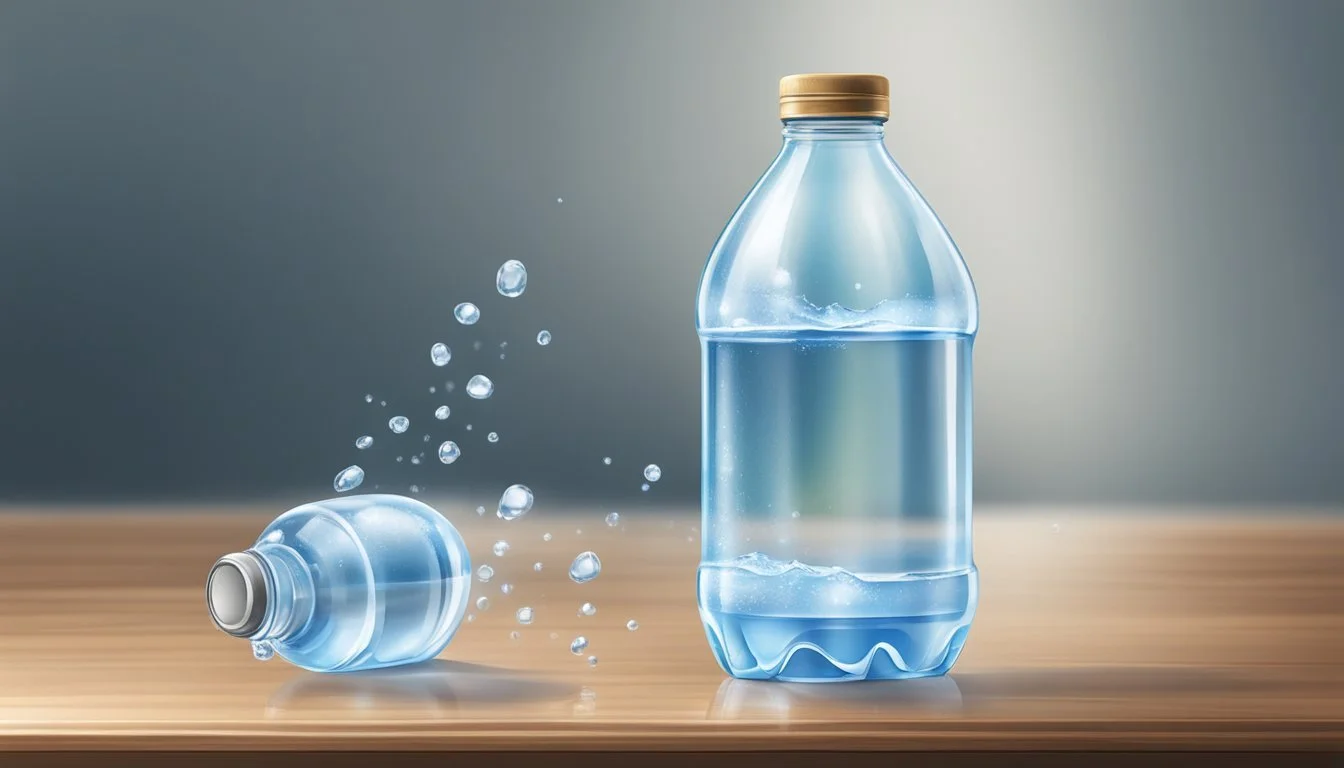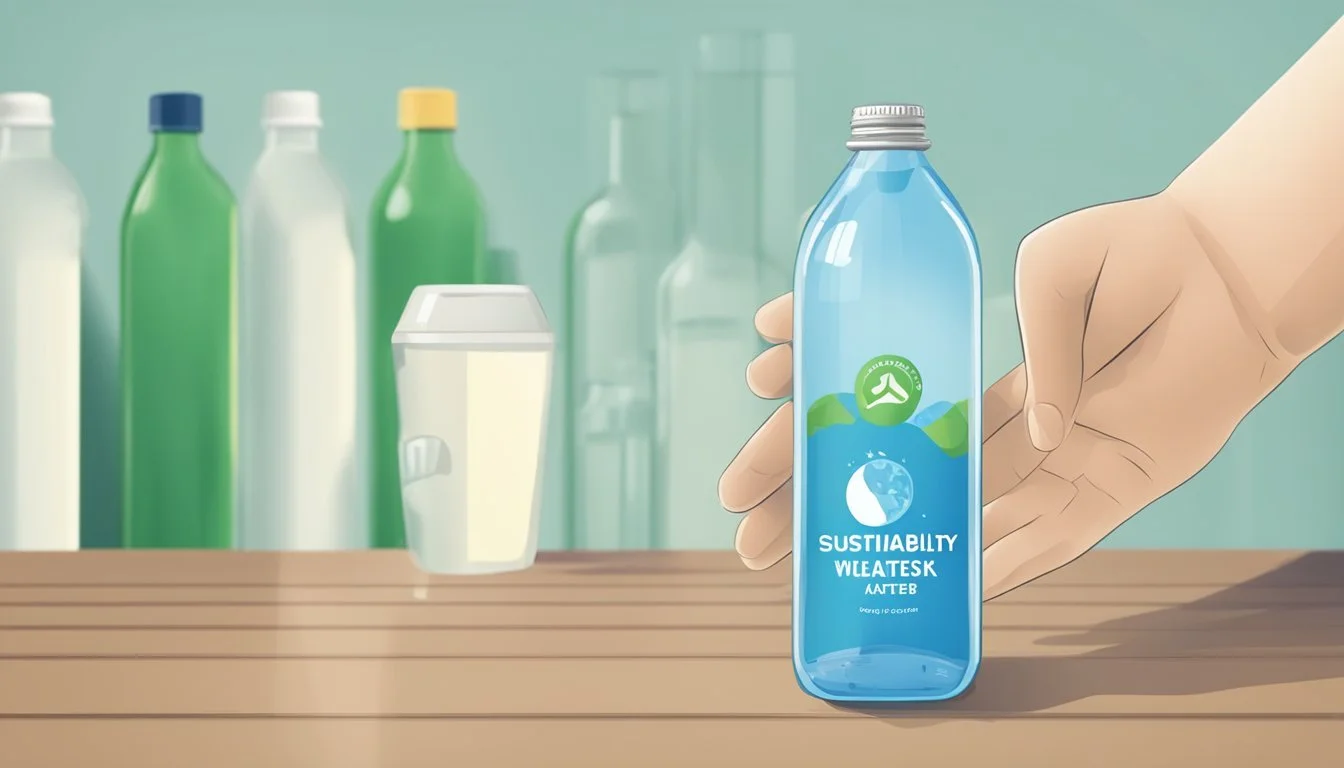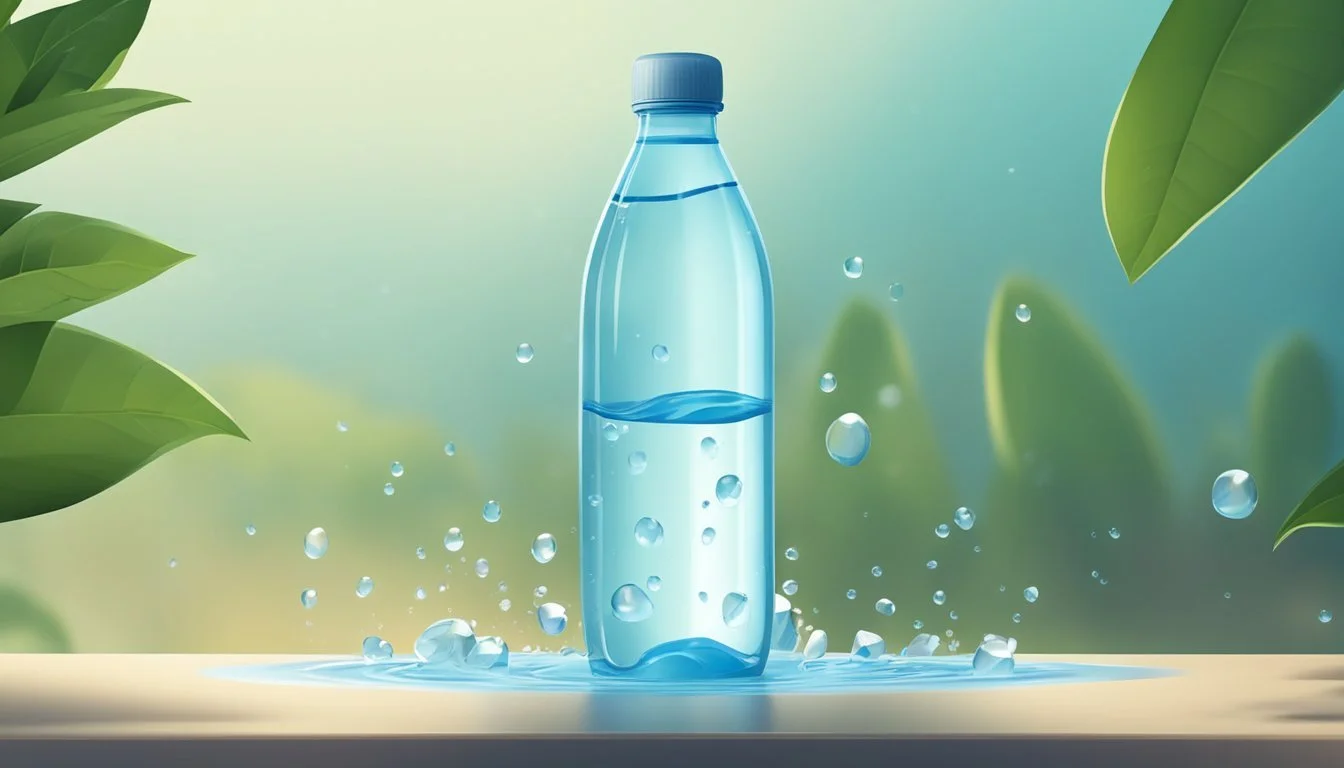Is Open the Best Bottled Water?
Safety and Shelf Life Explained
Bottled water has long been a convenient hydration option, but concerns about plastic waste and environmental impact have led to innovative alternatives. Open Water offers a sustainable solution with its range of canned water products.
Open Water provides ultra-purified water in 100% recyclable aluminum cans, making it a more eco-friendly choice than traditional plastic bottles. The company's commitment to sustainability extends beyond packaging, as they are certified Climate Neutral and offset all emissions from their operations.
The canned water market is growing as consumers seek more environmentally responsible options. Open Water's products feature electrolyte-enhanced, pH-balanced water that promises a clean, crisp taste. By choosing aluminum over plastic, the brand aims to reduce plastic waste and lower its carbon footprint, appealing to environmentally conscious consumers looking for guilt-free hydration on the go.
Types of Bottled Water
Bottled water comes in various forms to suit different preferences and needs. The two main categories are still water and sparkling water, each offering distinct characteristics and potential health benefits.
Still Water
Still water is the most common type of bottled water. It contains no added carbonation and is often preferred for its smooth, neutral taste. Purified water undergoes processes like reverse osmosis or distillation to remove impurities. Some brands add electrolytes or essential minerals back into purified water for taste and potential health benefits.
Spring water comes from natural underground sources and may contain naturally occurring minerals. Mineral water is sourced from protected underground reservoirs and contains a consistent level of minerals. These minerals can include calcium, magnesium, and potassium.
Artesian water is drawn from confined aquifers under pressure. It often has a unique mineral content due to its specific source. Some bottled water brands offer alkaline water, which has a higher pH level than regular water.
Sparkling Water
Sparkling water contains dissolved carbon dioxide, giving it its signature fizz. Natural sparkling water comes from springs or wells that are naturally carbonated. Many brands also produce artificially carbonated water by adding carbon dioxide to still water.
Some sparkling waters are flavored with natural essences or fruit extracts. These provide taste without adding calories or sugar. Mineral-rich sparkling waters can offer similar mineral content to their still counterparts.
Sparkling water can be a healthier alternative to sugary sodas. It provides hydration with a satisfying fizzy texture. Some people find that sparkling water aids digestion or helps them feel fuller between meals.
Bottle Materials and Environmental Impact
The choice of bottling material significantly affects the environmental footprint of bottled water. Different materials have varying impacts on energy consumption, carbon emissions, and recyclability.
Plastic Bottles
Plastic bottles, typically made from PET (polyethylene terephthalate), are lightweight and cost-effective. However, they pose significant environmental challenges. PET production requires substantial energy and releases CO2 emissions.
For every 50 oz of bottled water produced, between 1.6 and 22 oz of CO2 are released into the atmosphere. This carbon footprint far exceeds that of tap water.
Many companies now use recycled PET (rPET) to reduce environmental impact. Some have set goals to increase recycled content in their bottles. For example, certain manufacturers aim for 50% recycled PET by 2025.
Plastic bottles can be recycled, but global recycling rates remain low. In the United States, only 8.4% of plastic was recycled in 2017.
Aluminum Bottles
Aluminum bottles offer a more eco-friendly alternative to plastic. They are highly recyclable and can be reprocessed indefinitely without loss of quality.
The production of aluminum bottles requires more energy initially. However, their recyclability offsets this over time.
Aluminum bottles are lightweight, which reduces transportation emissions. They also provide better protection from light and oxygen, potentially extending product shelf life.
Some brands market aluminum bottles as "infinitely recyclable" to appeal to environmentally conscious consumers.
Glass Bottles
Glass bottles are inert, recyclable, and do not leach chemicals into water. They can be reused multiple times before recycling.
Glass production is energy-intensive, resulting in higher initial carbon emissions. The weight of glass bottles also increases transportation emissions.
However, glass is 100% recyclable and can be recycled endlessly without loss in quality or purity. Some regions have successful glass recycling programs.
Glass bottles appeal to consumers seeking a premium product or those concerned about chemical leaching from plastic.
Cartons
Cartons offer a lighter alternative to glass and plastic bottles. They typically consist of paperboard with thin layers of polyethylene and sometimes aluminum.
Cartons have a lower carbon footprint than glass or plastic bottles. They're made primarily from renewable resources (wood fiber) and are recyclable in many areas.
Some brands use cartons certified by the Forest Stewardship Council (FSC), ensuring responsible sourcing of wood fiber.
Cartons are lightweight, reducing transportation emissions. However, their complex composition can make recycling more challenging in some facilities.
Opening Techniques and Tools
Opening bottled water can sometimes be challenging. Different cap types require specific techniques and tools to access the refreshing liquid inside.
Standard Twist Caps
Standard twist caps are the most common type of water bottle closure. To open, grip the bottle firmly with your non-dominant hand and twist the cap counterclockwise with your dominant hand. If the cap is stuck, try wrapping a rubber band around it for extra grip.
For stubborn caps, run hot tap water over the cap for 30 seconds to expand the plastic. This can loosen the seal, making it easier to twist off.
Tapping the edge of the cap on a hard surface can also help break the seal. Be careful not to hit too hard and damage the bottle.
Sport Caps
Sport caps feature a pull-up spout for easy drinking. To open, grasp the cap and pull the spout upward until it clicks into place. Some sport caps may require a twisting motion while pulling up.
If the spout is difficult to pull, try using a clean kitchen towel for better grip. Gently wiggle the spout back and forth while pulling to loosen it.
For extra stubborn sport caps, carefully insert the tip of scissors or a utility knife under the edge of the spout to pry it up. Exercise caution to avoid injury.
Safety Seals
Many water bottles have a safety seal beneath the cap. After removing the cap, locate the perforated ring around the bottle's neck. Grip the small tab on the ring and pull it downward to remove the seal.
If the tab breaks, use your fingernail or a butter knife to scrape under the ring and lift it off. Some seals may require cutting with scissors.
For bottles without a visible tab, twist the cap back on partially and use it to grip and twist off the entire seal ring.
Health Benefits of Hydration
Proper hydration is essential for optimal bodily functions. Drinking adequate water helps maintain fluid balance, regulating body temperature and supporting circulation.
Water aids digestion by breaking down food and facilitating nutrient absorption. It also assists in flushing out waste products and toxins through urine and sweat.
Staying hydrated improves physical performance. During exercise, water helps transport oxygen and nutrients to muscles while removing lactic acid buildup.
Cognitive function benefits from hydration as well. Even mild dehydration can impair concentration, memory, and mood.
Water promotes healthy skin by keeping it moisturized and elastic. It may help reduce the appearance of fine lines and wrinkles.
Proper hydration supports kidney function, potentially lowering the risk of kidney stones and urinary tract infections.
Drinking water instead of sugary beverages can aid in weight management by reducing calorie intake and boosting metabolism.
For most adults, the recommended daily water intake is:
Women: 11.5 cups (2.7 liters)
Men: 15.5 cups (3.7 liters)
These amounts include water from all sources, including food and other beverages. Individual needs may vary based on factors such as climate, activity level, and overall health.
Consumer Guidance
Selecting the right bottled water involves considering safety, sustainability, and value. Informed choices can help consumers balance health, environmental impact, and budget concerns.
Choosing the Right Bottle
Water bottles come in various materials, each with distinct advantages. Glass bottles are inert and recyclable but heavy. Plastic bottles are lightweight and durable but may leach chemicals. Aluminum bottles offer a sustainable alternative, being lightweight and infinitely recyclable.
For daily use, reusable bottles made of stainless steel or BPA-free plastic are excellent choices. These reduce waste and often keep water cooler for longer periods.
When purchasing disposable bottled water, look for bottles made from recycled materials or those designed for easy recycling.
Price Considerations
Bottled water prices vary widely based on brand, source, and packaging. Premium brands often command higher prices, but may not necessarily offer better quality.
• Store brands: Often cheaper, similar quality to name brands • Bulk purchases: Can reduce per-bottle cost • Filtered tap water: Most cost-effective long-term solution
Some retailers offer subscribe-and-save options for regular bottled water deliveries, potentially reducing costs for frequent consumers.
Consider the hidden costs of bottled water, including environmental impact and recycling fees in some areas.
Understanding Product Labels
Product labels provide crucial information about bottled water. Key elements to look for include:
• Water source: Spring, purified, mineral, etc. • Treatment methods: Reverse osmosis, distillation, ozonation • Mineral content: Especially important for mineral water • Expiration date: Check for freshness
FDA regulations require bottled water to list the type of water and company contact information. Some brands provide additional details about water quality or environmental practices.
Look for certifications from independent organizations that verify water quality and safety standards. These can provide extra assurance about the product's claims.
Sustainability and Certification
Open Water stands out for its commitment to environmental responsibility. The company focuses on sustainable packaging and reducing its carbon footprint through innovative approaches.
Climate Neutral Certification
Open Water achieved Climate Neutral Certification in 2020, becoming the first bottled water company to earn this distinction. This certification requires a thorough assessment of the company's carbon emissions across its entire supply chain.
To qualify, Open Water conducted a detailed emissions inventory using both spend- and activity-based data. The company's total emissions were calculated at 6,515 tCO2e, equivalent to the annual emissions of 1,453 gas-powered cars.
Open Water's emissions intensity is 0.21 kgCO2e per unit of product. To offset its impact, the company invests in verified carbon reduction projects.
The use of aluminum bottles and cans is central to Open Water's sustainability strategy. These containers are infinitely recyclable and recycled more than twice as often as plastic, glass, or cartons.
Online Purchase and Review
Open Water offers convenient online purchasing options for its eco-friendly bottled water products. Customers can buy directly from the company's website or through major e-commerce platforms.
The brand's still and sparkling water varieties are available in different package sizes, including 12-oz cans and 16-oz bottles. Both options come in aluminum containers, aligning with Open Water's sustainability mission.
Customer reviews for Open Water products are generally positive. On Walmart.com, the 12-oz still canned water with electrolytes received a 5-star rating based on 1 review. The reviewer praised the product's taste and eco-friendly packaging.
Amazon.com features customer feedback for the 16-oz bottled water. Reviewers appreciated the water's crisp taste and the company's commitment to environmental sustainability. The product garnered a 4.7-star rating.
Open Water's U.S.-based production ensures quality control and reduces transportation-related emissions. The company's "adventure-tested" claim suggests durability and suitability for outdoor activities.
Online sellers typically offer bulk purchasing options, such as cases of 12 or 72 bottles. This allows customers to stock up on their preferred Open Water products while potentially benefiting from volume discounts.
Consumption Experience
The consumption experience of open bottled water encompasses taste, temperature, and convenience factors. These elements shape how consumers perceive and enjoy bottled water products.
Taste Profile
Bottled water offers a clean, crisp taste profile. Fresh still water typically has a neutral flavor, free from chlorine or other chemical tastes sometimes found in tap water. Sparkling bottled water provides a refreshing fizzy sensation on the tongue.
Some brands enhance their water with subtle mineral content, giving a slightly distinct flavor. Premium bottled waters may have a smoother mouthfeel due to filtration processes. Taste can vary based on the water source and bottling methods used.
Temperature and Storage
Proper temperature and storage are crucial for an optimal bottled water experience. Chilled water between 42-55°F (6-13°C) is most refreshing. Refrigeration helps maintain freshness and prevents bacterial growth in opened bottles.
Unopened bottles can be stored at room temperature, away from direct sunlight or heat sources. Once opened, it's best to consume within 24-48 hours for peak quality. Some bottles feature insulation to keep water cool longer.
Sparkling water should be stored upright to maintain carbonation. It's best served chilled to enhance the effervescence.
Portability and Convenience
Bottled water excels in portability and convenience. Lightweight plastic bottles with secure seals make them easy to carry. Many feature ergonomic designs for a comfortable grip.
Single-serve sizes fit in cup holders and bags, ideal for on-the-go hydration. Larger bottles suit home or office use. Easy-open caps allow quick access without spills.
Bottled water requires no preparation, making it convenient for travel, sports, or emergencies. The sealed packaging ensures safety and freshness until opened. Multi-packs offer economical bulk options for regular consumers.







